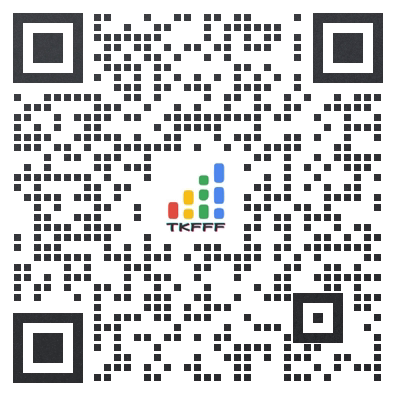
Keara Sullivan is known for her razor-sharp TikTok commentary on the foibles of her hyperonline generation. Since late 2020, the New York comedian has amassed over 400,000 followers — most of them fellow Gen Zers. Lately, though, the 24-year-old has noticed a lot of commenters who miss the point of her jokes.
In December, she posted a video marveling at the strangeness of Mount Rushmore. “I was like, ‘I literally just remembered we have this, and it’s so weird,'” Sullivan told me. “Why did we carve these heads into a mountain? My point was if human society collapsed, and humans refound this in 1,000 years, they would probably think they were gods rather than just normal men.” The video was quickly flooded with comments by older men who seemed to willfully ignore her point. “Check up your history. these men weren’t normal,” one wrote. “They founded the county your living in tfym,” another said. (She pointed out that, actually, only two of them helped found the US.)
Sullivan’s experience isn’t an outlier: Older people, and their judgments, are flooding TikTok. Earlier this year, Pew Research Center released a pair of surveys examining how different demographics used TikTok and other social-media sites. In their analysis, the writer Ryan Broderick and the researcher Adam Bumas found something odd: Contrary to TikTok’s reputation as a “Gen Z app,” people in their 30s and 40s comprised nearly 40% of surveyed users. What’s more, this cohort of largely millennials was growing faster than the platform’s 18-to-34 cohort.
Broderick argued that the aging of the platform marked the beginning of TikTok’s decline. Like Instagram and Facebook before it, he suggested the once hot, new app was on the verge of descending into a boring, spammy, and oftentimes depressing place to be.
But just because TikTok’s user base is becoming older doesn’t mean that it’s “over” for the app. Instead, experts and users I spoke with suggested that the platform may simply be moving into a new, more mainstream phase of existence. TikTok may be less like Facebook and more like YouTube, which evolved from a youth-centric novelty into the most widely used app among Americans of all ages.
Even if the millennial takeover doesn’t herald the end of TikTok, it does mean we need to change how we think about it. As long as it can survive the US ban that the Senate recently voted into law, TikTok seems bound to mature from an app for young people into a place for everyone — and that means its cultural significance will only grow.
Social-media platforms don’t just die because their users get older. In his post, Broderick pointed to “enshittification,” a term popularized by the technology writer Cory Doctorow to describe the process whereby platforms initially attract people by making their tools as useful as possible, only to slowly degrade the user experience as the companies face increasing pressure to turn a profit for shareholders. Generally, this is why search sucks, why Amazon is filled with low-quality products, and why everyone complains about Microsoft Teams.
On the one hand, this process is fairly age-agnostic; it’s simply a set of business tactics companies use to squeeze more revenue out of their existing audiences. “I could imagine that happening to LinkedIn, for example,” Kevin Munger, an assistant professor of political science at Penn State who studies how different generations use social platforms, said. “I don’t think that has much to do with it being cool.”
The way that you know Facebook is done, it’s not that you’ve only got old people there, and old people aren’t cool. It’s that everyone who had the wherewithal to leave, left.
On the other, Doctorow said, the effects of enshittification can look very different for different generations of users: Just as young people are often the first to adopt a new technology, when a platform becomes junky, they’re usually the first to flee.
It’s a question of switching costs: “People migrate when the situation that they’re in doesn’t work for them,” Doctorow told me. For a young person without a lot of commitments tying them down, it’s relatively easy to ditch a platform and link up with their friends somewhere else. The older someone is, and the more entangled their lives become with a platform — for example, they might use it to interface with customers, keep in touch with old college friends, or organize carpools for Little League — the more costly it becomes to leave.
“The way that you know Facebook is done, it’s not that you’ve only got old people there, and old people aren’t cool,” Doctorow said. “It’s that everyone who had the wherewithal to leave, left.”
There are some signs that TikTok is enshittifying. In a November investigation, Business Insider reporters watched 1,000 TikToks and found that roughly one out of every three of them was an ad. And TikTok Shop, a QVC-style e-commerce arm and creator affiliate program that launched in September, has been particularly polarizing.
“I have friends that say that TikTok Shop has ruined the app,” Casey Lewis, a trends researcher, said. “It’s people trying to convince their followers that they should buy this great sweater for $2 — that kind of thing.”
So far, Lewis hasn’t gotten the sense that this profusion of Shop-related content is necessarily driving young people away. In 2023, the platform still counted 62% of Americans ages 18 to 29, and 63% of those aged 13 to 17, as users — and those stats have remained relatively stable over time.
Gen Zers told me they usually hear of their peers cutting down on TikTok for different reasons: “Some of it is they realize how much time they’re spending on the app,” said Jonathan Gelfond, a 19-year-old media-studies and psychological-sciences student at UC Santa Barbara.
Taylor Lorenz, a technology columnist for The Washington Post and the author of “Extremely Online,” told me she thought the uptick in millennial users may be good news for the platform. “Millennials have a lot of money compared to teenagers,” she said. “It can be good — especially as TikTok moves to TikTok Shop — if they’re able to capitalize on this shift and sell products more effectively to older users.”
Lorenz thinks YouTube is a more accurate comparison than Facebook. “YouTube is much more of an entertainment app in the way TikTok is,” she said. And lest we forget, in the years following its 2005 launch, the video platform was also “associated with young people doing things, like cat videos,” she added. Now, at nearly two decades old, YouTube is used by people of all ages, for all sorts of reasons.
“I don’t think anybody thinks, ‘Oh, YouTube, it’s so stodgy and lame,’ like the way they do Facebook,” she said. Munger pointed out that larger audiences could result in more bland content, as creators try to appeal to more people. Even still, YouTube is by far the most popular app among young people.
With an aging user base, generational trends get muddled. Just because something is going viral on TikTok doesn’t necessarily mean Gen Z is behind it.
Most trends, like baggy jeans, do start with Gen Z. Lewis, who uses the app primarily to study youth trends, noticed Gen Zers posting on TikTok about going to thrift stores to buy huge, cheap jeans. “Then millennials realized they couldn’t wear skinny jeans anymore, so they’re buying Citizens of Humanity $200 wide-leg jeans,” she said. “It definitely starts with the Gen Zers. And then the millennials get to it, and then they run with it.”
This desire to participate in youth culture is part of what makes the millennial generation — and this particular moment in TikTok’s evolution — unique.
Other trends happen in reverse. Lewis pointed to the recent Stanley-cup craze, which saw new tumbler designs sell out in minutes after the cups went viral on TikTok. Though the trend became synonymous with Gen Z and Gen Alpha kids trying to impress their peers at school, it was largely the product of savvy marketing by The Buy Guide, a group of three millennial shopping influencers who began singing the product’s praises in 2017 before partnering with Stanley in 2020 to help promote it to new audiences.
“In-the-know millennial moms caught on,” Lewis said. “Stanley is one of the rare cases where it trickled down from millennials to Gen Zers — and then, of course, Gen Alpha, who have millennial parents, jumped on it as well.”
Though the Pew data suggested that users ages 35 to 49 were slightly more likely to upload videos than their 18- to 34-year-old peers, it’s difficult to say what role older users are playing in sparking trends. Part of that comes down to the nature of TikTok itself. Munger pointed out that while someone could find that they’re being served a lot of content made by older creators, other users could find the opposite to be true. Lewis, for her part, hasn’t noticed a change. “My FYP is still entirely Gen Zers doing funny things, talking about trends, talking about things they’re buying,” Lewis said, referring to her For You page.
Some people, though, have noticed a clear uptick in Y2K and 2000s nostalgia on the app, which harks back to a time when millennials were children or teenagers. In a piece for Wired, Jason Parham pointed to a recent glut of “Mean Girls” and “The Sopranos” videos as evidence of the dawning reality, per one of his coworkers, that “the olds are in charge now.”
Leslie Horn Petersen, a millennial mother of two and my coworker, admitted these trips down memory lane were part of why she loves using TikTok. Recently, she’s been following a creator who posts images created using Kid Pix, a primitive drawing game that launched in the late 1980s as a child-friendly alternative to Microsoft Paint. “I remember having it in the computer labs at school,” she said.
It really comes down to the quality of the algorithm.
The revival of fashion and digital culture from the turn of the millennium has been primarily driven by Gen Z, experts told me, but the growing millennial audience can help take those trends mainstream. As Munger sees it, this desire to participate in youth culture is part of what makes the millennial generation — and this particular moment in TikTok’s evolution — unique. And we can probably chalk it up to the fact that many millennials, at least economically speaking, are still trapped in a kind of perpetual young adulthood.
“There’s a connection between the well-documented millennial tendency to not be able to progress through the life cycle for various economic, mostly material, reasons,” he said. “That has made them more interested in youth culture for a longer period of time than might have been the case for previous generations.” The same could be said of Gen Z, which would explain the generations’ shared fascination with a time before smartphones and round-the-clock news. “It just comes back to, we all do yearn for simpler days,” Lewis said.
The Gen Z users I spoke with didn’t seem particularly concerned about an influx of olds. Gelfond, the UC Santa Barbara student, welcomes it. He uses TikTok to keep up with politics and current affairs and appreciates the wider variety of content that has become available as more politicians, subject-matter experts, and other verified sources sign up. “Since the development of it generating a larger millennial user base, I’ve enjoyed it more,” he said. “You can still view dance videos and social-media influencers and things like that,” he added, “but you now also have the option of viewing more mature content.”
Sullivan, the comedian, sees the increased intergenerational chatter as mostly good-spirited. “I’ve seen this trend of older people making TikToks that are really funnily edited or dramatic and intense, and all the comments are Gen Zers being like, ‘Pop off, queen!'” she said. “I’ve never seen any Gen Z be like, ‘There’s too many older people on this app.'”
While TikTok is clearly moving into a new chapter, a lot is still up in the air. At the moment, pretty much everything rests on what happens with the US TikTok ban, which will ban the app outright if parent company ByteDance doesn’t sell the stateside version of the app to a domestic owner within the next year.
For an app that hinges in such a large part on the eerie mind-reading powers of its algorithm, Lewis stressed, even the less drastic of these two outcomes could dramatically change users’ experience of the app. “It really comes down to the quality of the algorithm,” she said. “If the user experience never wavers, then I think they’re fine.” But if changes to the company result in a worse algorithm, she said, “I don’t know.”
文章来源:businessinsider
TKFFF公众号
扫码关注领【TK运营地图】

TKFFF合作,请扫码联系!







 闽公网安备35021102002035号
闽公网安备35021102002035号